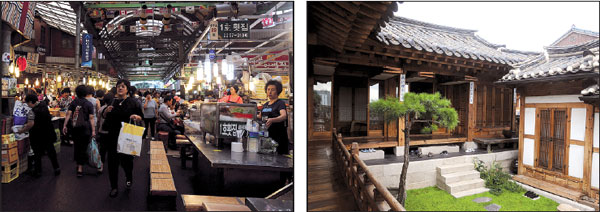Cultural Riches In Shopping Hub
Updated: 2016-09-16 09:52
By Xu Lin(China Daily)
|
||||||||
South Korean capital offers visitors perfect blend of old and new
Seoul is a city filled with cultural heritage, delicious food, and is more than just a shopping destination for cosmetics.
The city, which is about two hours' flying time from Beijing, is friendly if you like to walk and your adventures can start from Dongdaemun.
Located in the city's center, it marks the start of an 18-kilometer-long wall built more than 600 years ago to protect the capital.
The wall stretches along the foothills of a mountain range. Inside the walls are hanok, or traditional Korean houses.
The wall has secret doors for those who need to go out if the city's gates are closed.
For those who want, there's a free guided tour you can book one three days in advance on the official website dobo.visitseoul.net.
One of the first places you see if you walk is the Ihwa-dong Mural village.
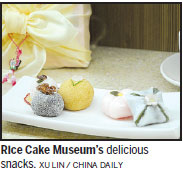
It draws tourists who want to see beautiful paintings on the house walls and steep stairs.
Strolling through the narrow alleys along the mountainside you also see colorful graffiti on low walls - pandas and characters like the little prince from the French novel of the same name.
It's like thumbing a sketchbook and there are always surprises.
Meanwhile, more than two dozen young women queue up to take photos in front of a bungalow wall with a painting which shows blue sky, white clouds and a pair of angel wings.
The site has become popular because a South Korean superstar posed here for a photo.
The murals came up in 2006, after the local government started an art project to improve the village environment.
Tourism has affected the life of the local people in recent years, so you often see cute cartoon street signs reminding visitors to be quiet while they are in the residential area.
Near the village is Daehangno, or College Street. A popular neighborhood with young people, it has more than 150 small theaters and galleries. It also hosts theater festivals throughout the year.
This neighborhood took shape when Seoul National University was moved from the area in 1975.
Marronnier Park was then built in Daehangno. The park is now a place where you can enjoy free music and dance performances by young people on weekends.
Near the park is Gwangjang Market, once known for its old clothes and farm produce but has since grown and includes local street food, which has now become its calling card for both denizens and visitors.
As for food choices, my translator Park Hae-jin says the locals like to eat mung bean pancake on rainy days because the sizzling sound of the pancake in hot oil is like the pitter-patter of rain.
Also along the route is Gyeongbokbung Palace - built in 1395 - which served as the main palace of the Joseon Dynasty (1392-1920) for more than five centuries.
The palace has been expanded, destroyed and rebuilt many times in its long history.
In 1592, it was burned during the Japanese invasion and was not restored until about 270 years later.
More than 90 percent of the palace was torn down during Japanese rule in the early 1900s.
Meanwhile, those who are dressed in traditional South Korean attire can enter the palace for free.
Visitors to the palace can enjoy a free guided tour for an hour in Chinese, English, Japanese and Korean.
During my tour, I learn that about 30 percent of the buildings in the palace complex have been restored since 1990.
You will first arrive at Gwanghwamun Gate with its five-meter tall walls, where you can take photos with royal guards dressed in traditional costumes.
They are tall and sturdy, with weapons in their hands, and they perform the changing of the guard ceremony twice a day.
The palace also contains the Geunjeongjeon Hall where the affairs of state were dealt with, including coronations and meetings.
In the center of the hall is a footpath, which was reserved for the king.
And, on both sides of the footpath are stone markers carved with the ranks of court officials.
Near the palace is Bukchon Hanok Village.
The village was a dwelling place for royal families and aristocrats of the Joseon Dynasty.
It boasts more than 900 traditional Korean houses.
Visiting the village is like doing time travel. There, you can walk in the quaint alleys, where there are only residences rather than shops and restaurants. Around 20 of the old houses which are State-owned are open to the public.
From the old houses we move on to Simsinheon, which means "a house where the heart is found". It was constructed between 2002 and 2004 by professionals.
They collected pinewood, which was more than a 100 years old, and built the house using mortise and tenon joints instead of nails. The house combines tradition and modernity.
The owner has now moved away from the area as it has become a popular tourist attraction and has opened it up to visitors to showcase traditional Korean lifestyle.
In the house, there is a large table in the sitting room. The table is a lacquer piece that has colorful slices of shells as thin as hair. It took eight months for two craftsmen to complete the table.
The doors comprise wooden door frames, traditional paper and fabrics.
And, as is traditional, the doors are lifted up for ventilation in the summer and shut in the winter.
These doors hang over your head, and the main hall has another layer of glass doors, offering reflections of the sky and the clouds.
The Dong-Lim Knot Workshop is located in a traditional house in the area.
There, you can learn how to make simple bracelets, rings and knots from string and view exhibitions of traditional ornamental knots such as waistbands and tassels.
As for shopping, you can visit the city's small markets to buy things that cannot be found in duty free shops.
From March to October, the Seoul Bamdokkaebi Night Market runs every Friday and Saturday from 6 pm to 11 pm at the Yeouido Hangang Park's Cascade Plaza.
There, you can sample snacks from around the world - from food trucks - enjoy traditional and modern performances and buy original handmade accessories and leather purses.
Pretty rings, earrings and bracelets are also available at reasonable prices.
Yeonnam-dong, which is next to Hongik University, has a market with young people and students selling handmade items such as painted postcards on weekends.
It used to be a farmers' market, but as there were very few visitors the local government made it a flea market.
The market is now frequented by young locals, who also visit the nearby alleys packed with restaurants, bakeries and cafes.
xulin@chinadaily.com.cn
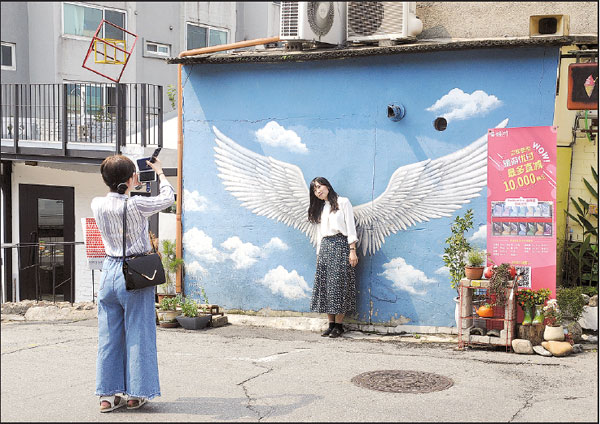
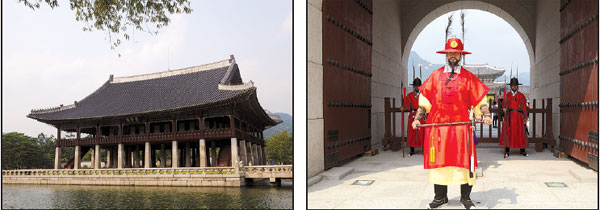
|
Clockwise from top: In the Ihwadong Mural village, young women take a photograph in front of a painting; royal guards in traditional costumes at Gwanghwamun Gate; Simsinheon, a traditional Korean house; Gwangjang Market offers various street food; Gyeongbokbung Palace was the main royal palace of Joseon Dynasty (13921920).Photos By Xu Lin / China Daily |
(China Daily 09/16/2016 page10)
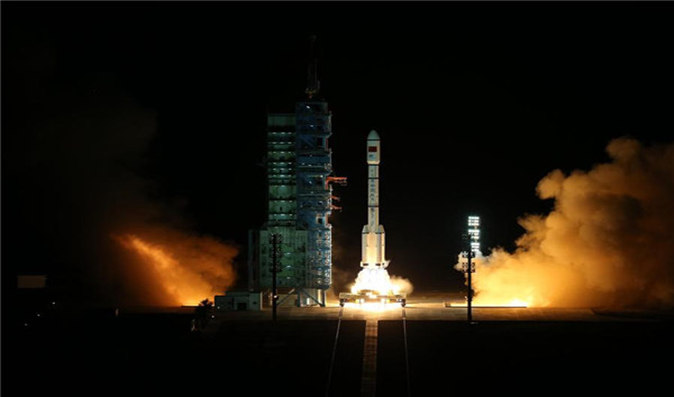
 China launches second space lab into orbit
China launches second space lab into orbit
 Riding on smart cycles in Nanjing city
Riding on smart cycles in Nanjing city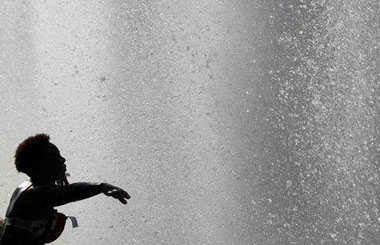
 Britain records warmest September day since 1911
Britain records warmest September day since 1911
 Island retreats you may not want to miss for holidays
Island retreats you may not want to miss for holidays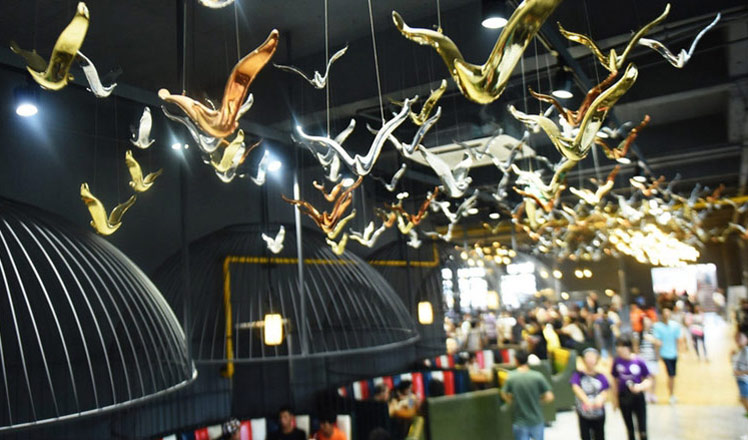
 Industrial-style canteen surprises university students
Industrial-style canteen surprises university students
 Cute animals share a bite of moon cake festival
Cute animals share a bite of moon cake festival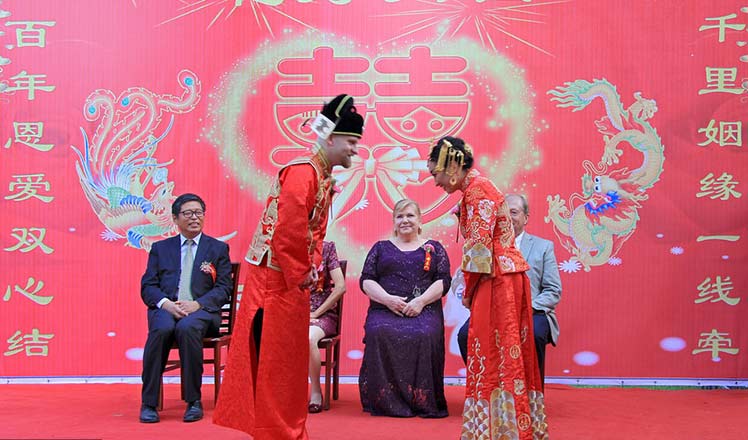
 Orphaned Chinese marries American at SOS village
Orphaned Chinese marries American at SOS village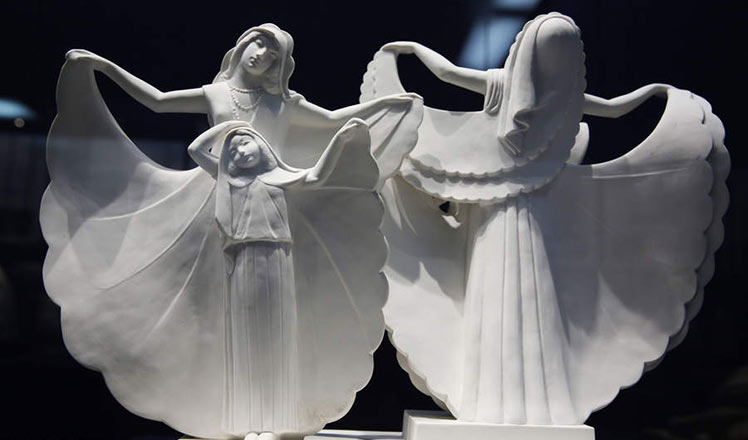
 French royal porcelains shine in Xi'an
French royal porcelains shine in Xi'an
Most Viewed
Editor's Picks

|

|

|

|

|

|
Today's Top News
Trump outlines anti-terror plan, proposing extreme vetting for immigrants
Phelps puts spotlight on cupping
US launches airstrikes against IS targets in Libya's Sirte
Ministry slams US-Korean THAAD deployment
Two police officers shot at protest in Dallas
Abe's blame game reveals his policies failing to get results
Ending wildlife trafficking must be policy priority in Asia
Effects of supply-side reform take time to be seen
US Weekly

|

|
